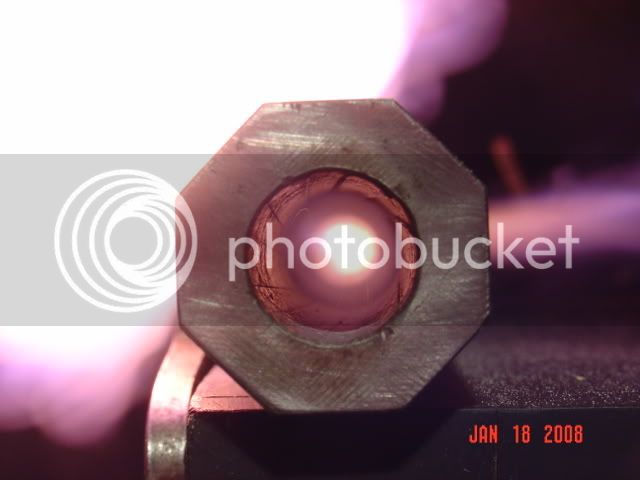Please don't mix apples and oranges. Very few Bench Rest shooters use FLINTLOCKS. They almost all shoot Percussion guns. They should COMPRESS the powder in a percussion ignition barrel.
Flintlocks fire differently, which is why using 2Fg powder often( but not always) works so much better in such rifles, provided they are of .50 caliber and greater. When you do see a Flintlock on the Bench Rest ranges, its usually a .45 or smaller caliber rifle. It makes a difference, and that difference shows up in the type of powder that will ignite the fastest and most consistently. I spent a lot of time with my .45 trying both powders, along with different loading techniques, as a percussion gun. When I got my .50 caliber, it was initially set up with a percussion lock. I did lots of similar work with it, and found using 3Fg powder gave more consistent ignition. When it was converted to Flintlock, it changed.
I blamed my inexperience shooting a flintlock for the wider groups. So I shot the heck out of it, training myself to shoot a flintlock. I asked other flintlock shooters who were years ahead of me in experience, to shoot the gun for groups.
I asked them to watch my shooting form, and particularly my follow-thru. When I changed powder granule sizes from 3Fg to 2Fg, ignition became more consistent, and my SDV went down. Groups tightened back up to what I had expected when the gun was a percussion ignition rifle. I did have to change the amount of powder to get the same velocities, and I had to add a bit more when I began NOT COMPACTING the powder when I switched to using 2Fg. I asked those experienced flintlock shooters to shoot the gun off a rest, without telling them about the switch in powders. They got tighter groups, too.
I am quite willing to accept the idea that my experience works for MY RIFLE- and that, MAYBE, its a fluke of Nature. I will give you that. The same Experienced flintlock shooters had different results with new flintlock rifles they acquired, including Don, who bought a slightly used .62 caliber flintlock, and found it shot its best groups using 3Fg powder. Don had been the most Dogmatic about using 2Fg powder in calibers over .50, until that time. He was the guy who nagged me into trying 2Fg powder in my .50 .
I have watched the flintlock bench rest shooters at Friendship, loading their guns. Those with the larger bore guns- only a few-- tip their barrels to the side, so that the powder slides down the barrel, rather than the barrel being a "drop tube", and compressing the powder. They are using 2Fg powder, too. The .40 caliber guns are used with 3Fg and they are held vertically, so that the powder is compressed. I do see them use a vent pick to open a hole into the powder charge before priming the pan, so they must see some value in doing this to improve ignition.
I didn't get names, as I was not asking questions during their relays- knowing how distracting that is to all shooters.
These are the result of my own observations, and testing with my rifle. I have followed the same procedure in loading my 29=0 ga. fowler to shoot PRBs, and both ignition is everything I could want, and the SDV is very low. Accuracy has been as good as I should expect, finding that I need either a larger diameter ball, or much thicker patching in my particular barrel! Its still a work in progress.
I accept the fact that I might be totally wrong about all this. I have been wrong before. I got over it. Its why I continue to read, and to try new things, and to test components, when I can. I freely "steal" good ideas from members of this forum, but try to remember who was the source if those ideas work out for me, so that I give them credit. Thanks to everyone for the civil discussion of differences. :hatsoff: :hatsoff:
:v







